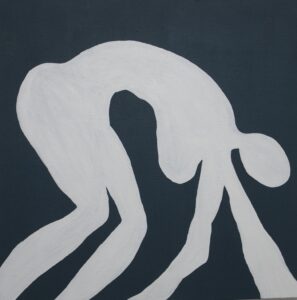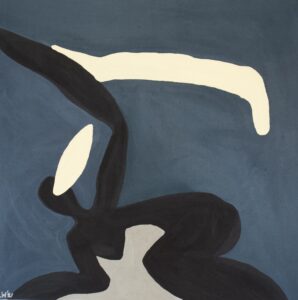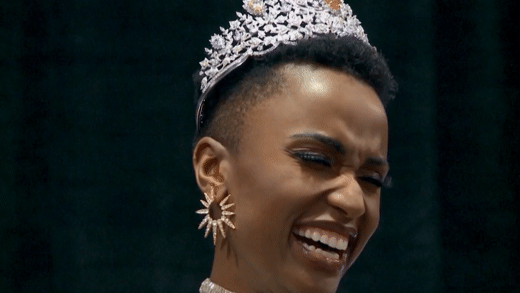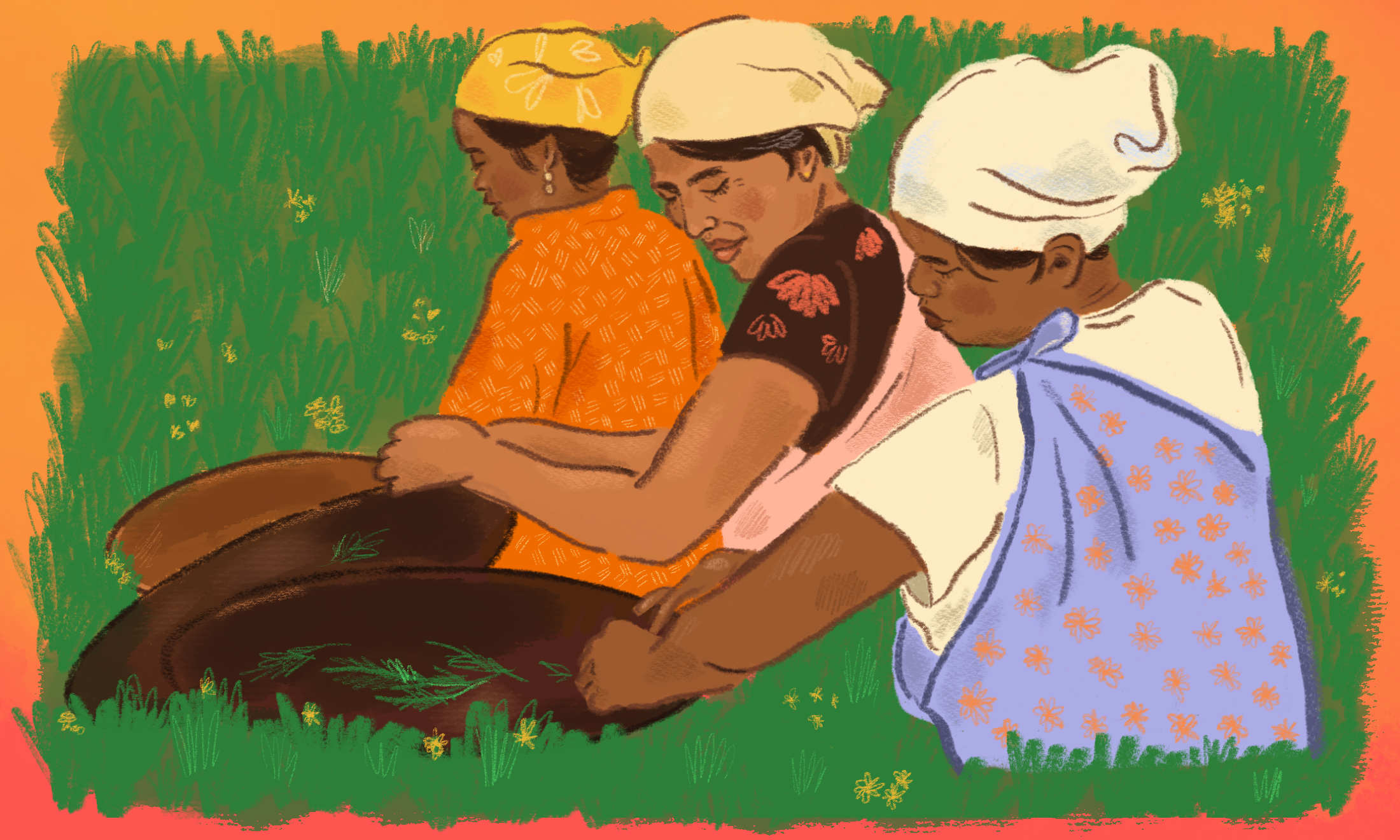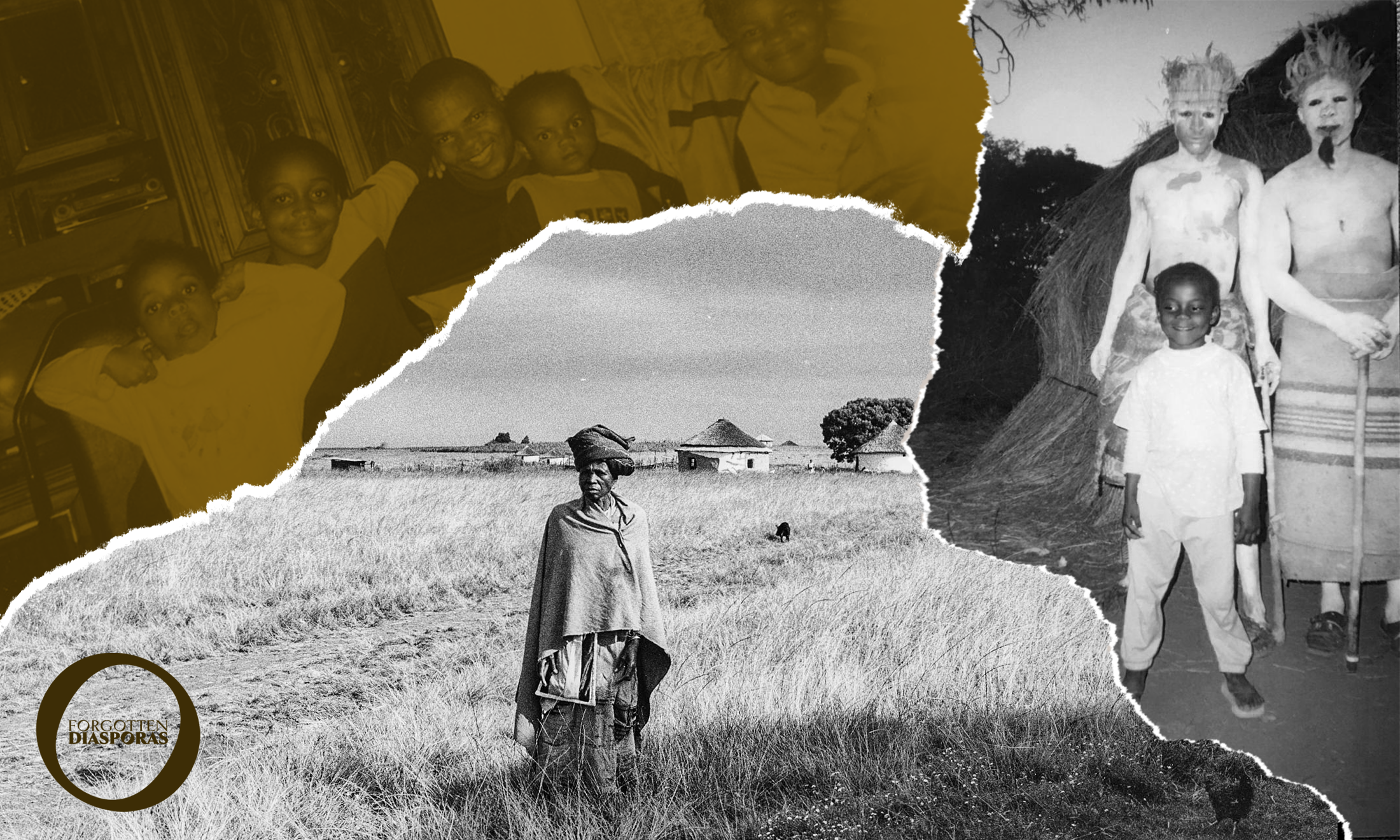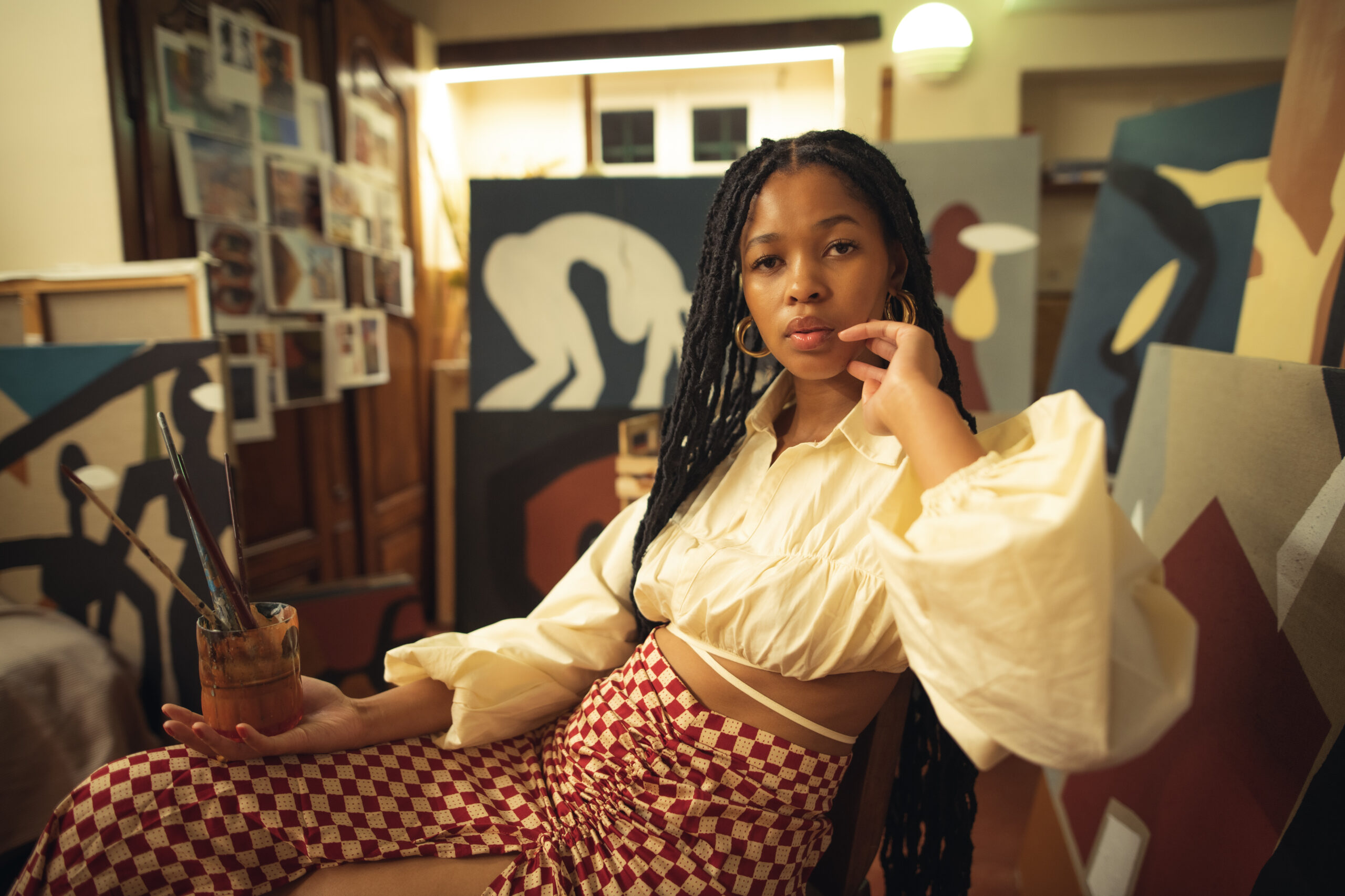
Photography by From The Bay
Lulama Wolf’s paintings take you on a journey of South African heritage and history
Mixing ancient spirituality, rock drawings, etchings of human evolution, and heritage this artist says history is key to making art new.
Precious Adesina
22 Feb 2022
South African artist Lulama ‘Wolf’ Mlambo uses art intentionally to bare her “spirit”. The 28-year-old says she wants that to be the first thing a person sees before how her paintings look or even what it means. “When you meet someone, you meet their aura before you get to know who they are without them even saying anything,” she says over Zoom. My first impression of Wolf was that she gave off an effortless ‘cool girl’ vibe, though it’s also clear from our conversation that she carefully considers most things she does both on and off the canvas. She pauses before she speaks to think about what she is going to say, she never says too much usually opting to err on the side of caution. Wolf is dressed down in a green, white and black headwrap, clear lip gloss and a grey polo shirt. These muted tones mirror the earthy colours she employs in her paintings.
The artist lives and works in Johannesburg, where she also originally studied art and fashion at university, though she dropped out to focus on pre-colonial approaches to painting. “You learn a lot from traditional forms of teaching on how you need to do something, but I found that I couldn’t express my curiosity with those techniques,” she says. Despite this, she does value what she learned through formal education. “The more I sharpen my eye, the more I’m starting to appreciate everything else that I was taught in hindsight.”
But not completing her degree hasn’t held her back. While she may not be a household name in the UK yet, the artist has already made a name for herself back in her home country and beyond having featured in a number of publications including being listed as an ‘artist to watch at 1-54 Contemporary African Art Fair’ by one of leading African diaspora publications New African Magazine. She is now making her mark in Britain. Her most recent body of work will be shown at Marylebone-based gallery SoShiro until March. The solo exhibition titled ‘Ndizalwe nge ngubo emhlophe’ translates to ‘I was born wrapped in a white blanket’ in Xhosa, a South African Nguni language, which is a group of Bantu languages spoken in the country. “It’s a proverb by spiritual healers in South Africa,” she says. “This particular term usually means that someone is of purity and innocence, which will result in wealth, success and calm throughout their life.”
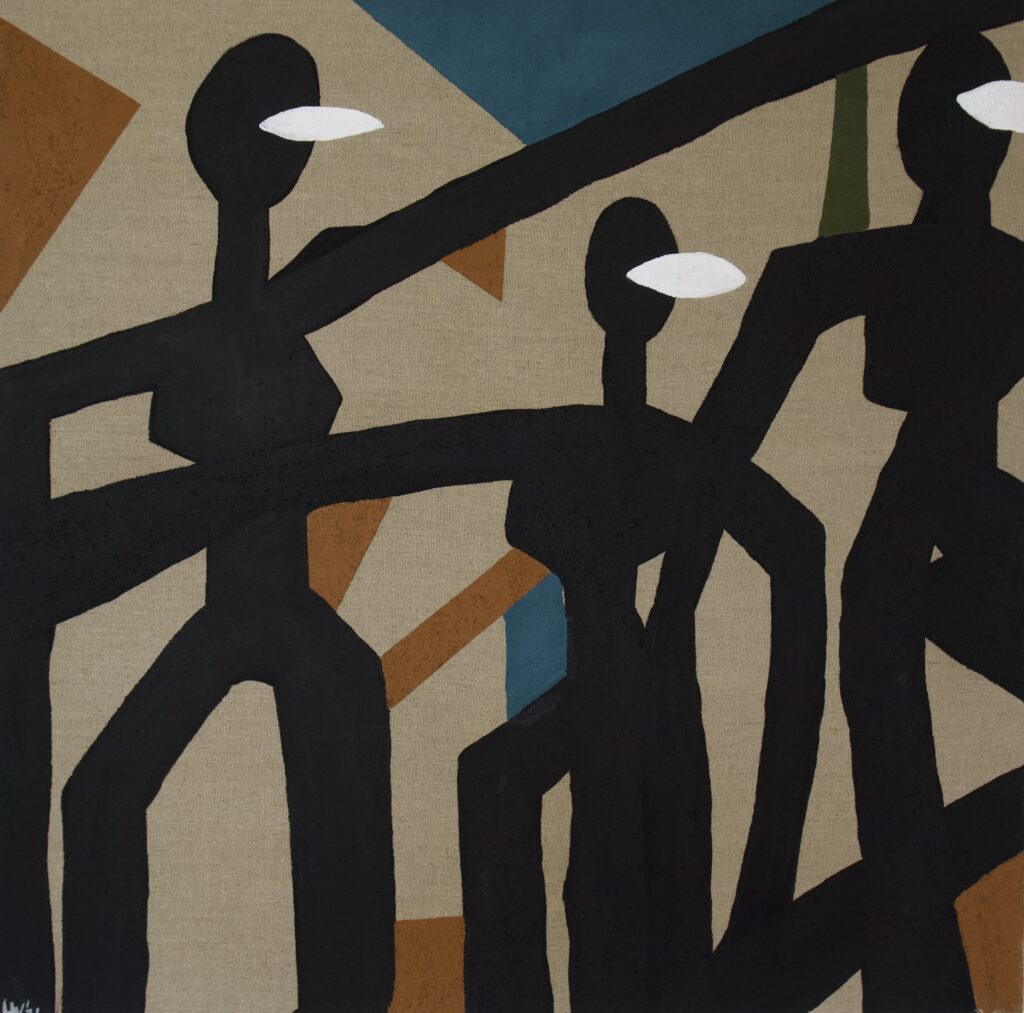
“I always want to dial down on explaining what my work means, allowing myself and whoever views it the liberty to properly experience it,” she says. Personally, I find her work comforting and almost familiar, something I’d expect to find in my African mother’s home. Each artwork also feels as if there is a story behind them as the figures in the painting often interact with their surroundings, objects and the other people within it. However, her methods shed some light on her intentions. Wolf says her work is inspired by a technique used in rock art (which can also be found in cave drawings, work on cloth and etching on animal skin) in an attempt to pay homage to the art that has come before.
For Shiro Muchiri, the architect and designer who founded SoShiro, translating these influences to canvas gives her work a subtle power. “She’s exploring cultural resistance and human heritage through traditional African home decoration techniques,” she says. And in a way, Wolf confirms this interpretation, explaining: “I’m pretty much going back to basics.”
“I try to keep things authentic to where I come from, and if I’m going to be using ancient titles, I need to find a way to balance a contemporary perspective and a pre-colonial one,” she adds.
“I try to play with nostalgia and the future to see how they manifest in one painting so that they create one language. You can’t look forward to something without looking back, especially in context to where you are. It’s in your DNA”
A quick scroll through her Instagram page (which boasts just over 100,000 followers) shows she’s incredibly stylish. Wolf was considered one of South Africa’s most well-known fashion bloggers only a matter of years ago. It’s hard to tell whether she’s posing for a shoot, showcasing her art or just out having a good time. In one recent post she is on the cover of South African Glamour, others she is lounging in beautiful locations in exquisitely designed dresses. Among all of these images is a multitude of snapshots of her paintings with her both in front and behind the camera.
Today, Wolf’s social media is an extension of her work as an artist, especially living in South Africa where she believes resources to get your paintings recognised globally are limited. “If you’re a Tumblr generation kid, you’ve only really got the computer to work with,” she says, clarifying that that’s how she started blogging and eventually modelling. Art in South Africa has seen increasing worldwide recognition with the opening of Zeitz Museum of Contemporary Art Africa in Cape Town in 2017, which is now the largest contemporary art museum in the entire continent. Artists such as Teresa Kutala Firmino, Blessing Ngobeni and Zanele Muholi have also all gained significant worldwide recognition over the last decade.
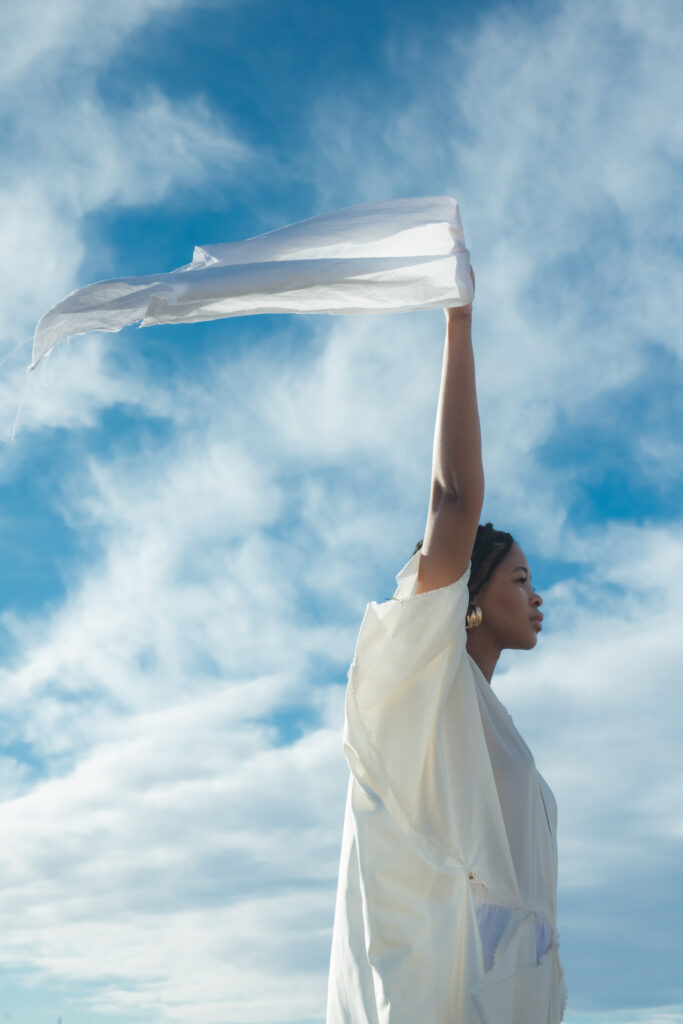
Like many people, Wolf had a job alongside her studies while she had time on her hands to explore different things. But the fact it was modelling has partially eclipsed discussions surrounding her work today even though she describes it as a “means to an end”. It gave her the opportunity to travel and get to know a wide range of people. She’s hesitant to discuss her fashion past as she believes it can often overshadow what she considers her actual job – painting. In fact, Wolf hopes that someday conversations about her modelling will cease.
“It used to piss me off and I’d be like ‘why is this a focus?’ But it will surely one day just die down when people are not interested in it anymore,” she adds. Wolf’s need to distance herself from modelling also suggests that there may perhaps be a degree of snobbery in some art spaces towards blogging, modelling and content creation. However, they’re both heavily visual worlds who’s influences have clearly collided to shape Wolf’s style both physically and artistically. “I’ve been able to dabble in really great fashion spaces that also carry the same integrity as the art ones do,” she adds.
It’s possible that her time modelling gifted her with a deep curiosity for posed human forms. The abstract artist often depicts people-like figures contorted into different positions such as buckled over, sitting around tables or flowing out of basket-looking objects like flowers, compositions she says are inspired by the imagery of evolution. “History books show us, humans, as bent over forms that have transformed over time. What interests me is how long that process took and whether we are still living in a place where we can develop and change,” she says, though she doesn’t spend too much time deliberating on the shape of her figures. “The direction the forms will take are the only thing [in the paintings] that I would say aren’t intentional. Yes, they are human, but I want to play with intuition and formlessness”.
Wolf’s current exhibition at SoShiro will showcase her new pieces created while she attended a month-long residency in Antibes, in the French Riviera late last year, for the Undiscovered Canvas Art Residency Program designed for emerging African artists. It was this trip that inspired the name.
She says the biggest change people will notice in her latest body of work is its proximity to realism. The human bodies become slightly more identifiable than her other abstract paintings. “The differences aren’t too big, but they’re extremely identifiable,” Wolf says “I try to play with nostalgia and the future to see how they manifest in one painting so that they create one language. You can’t look forward to something without looking back, especially in context to where you are. It’s in your DNA,” she adds, which somewhat contradicts her own hesitancy to talk about her own past.
Her obsessions with the past stem from a respect for spirituality, heritage and what it means to be human. It also seems that she is going through her own transition and evolution in a way that all creatives do, taking her craft more seriously and looking to earn respect for her current contribution to the visual realm rather than what she has done before. Mixing an eclectic range of influences and having a clear sense of what she wants to achieve going forward, Wolf is pushing the aesthetic of South African art to an interesting place.
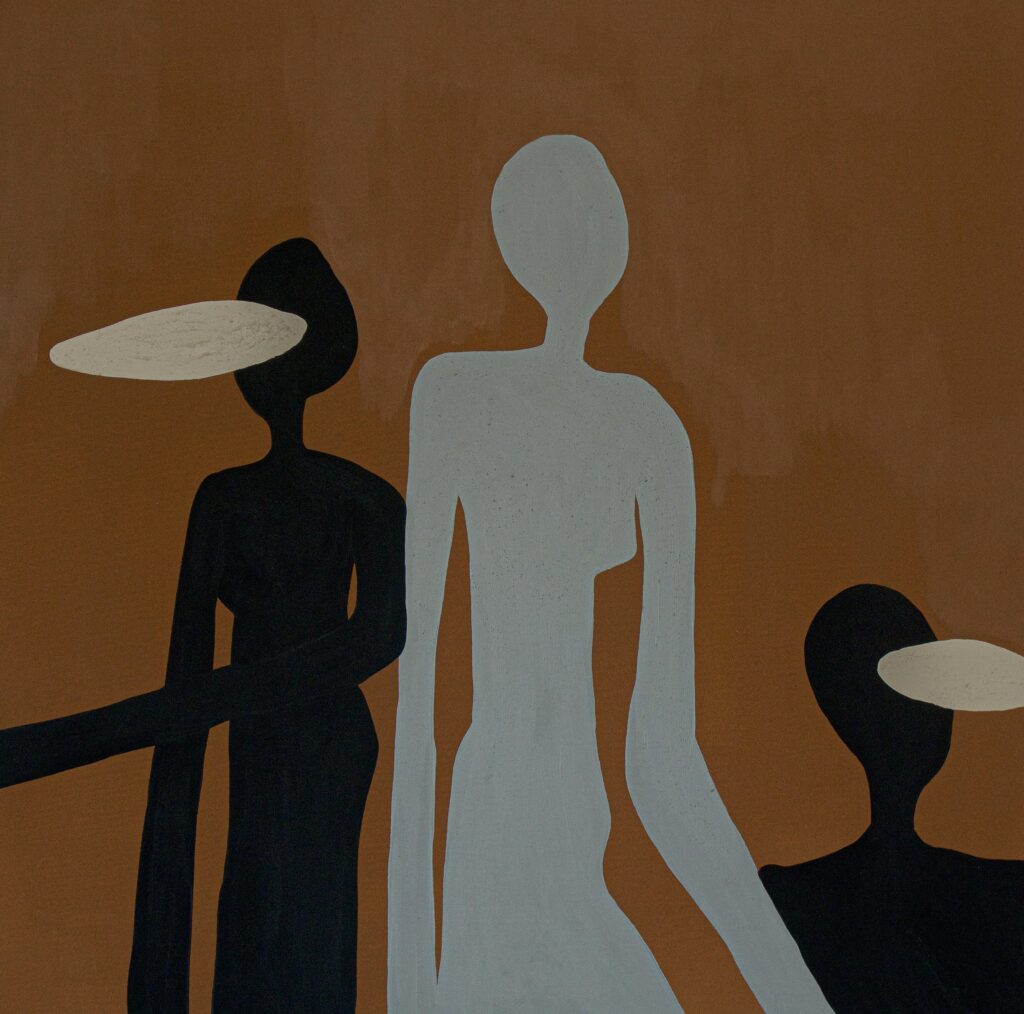
Ndizalwe nge ngubo emhlophe (I was born wrapped in a white blanket) is on display at SoShiro until March 4, 2020.

